Canberra artists, local subjects and artists with connections to the national capital are all in the list of finalists for the 2024 Gallipoli Art Prize.
Thirty-six finalists have been announced for the 19th annual prize. The winner will be announced in Sydney on April 17, in the lead-up to Anzac Day.
The Gallipoli Art Prize is a privately funded prize, supported by the Gallipoli Memorial Club in Sydney. Artists are invited to respond to the broad themes of loyalty, respect, love of country, courage, comradeship, community, peace and freedom as expressed in the Gallipoli Memorial Club's creed.
COMRADESHIP AND GRIEF
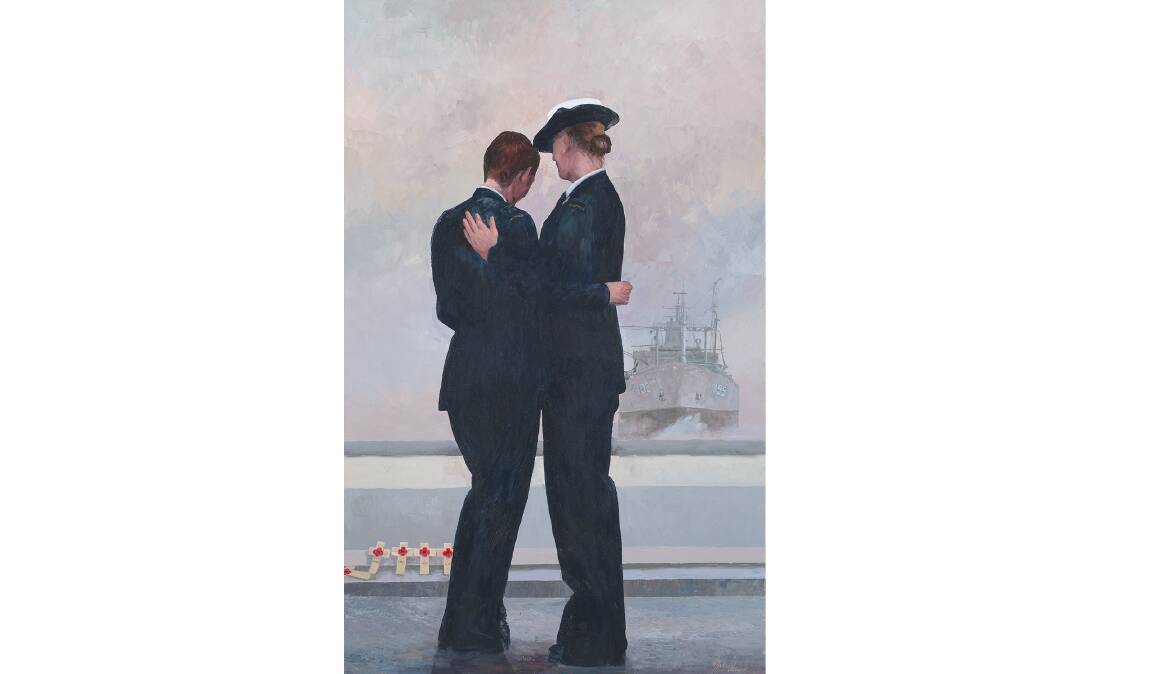
Canberra artist Margaret Hadfield, who won the 2006 Gallipoli Art Prize, is a finalist in this year's competition for her work, Comradeship and Grief, based on a photograph that was published in The Canberra Times in 1998.
The photograph, of navy colleagues consoling each other, was taken as news broke that a fire onboard HMAS Westralia had claimed the lives of four crew on May 5, 1998.
Midshipman Megan Pelly, Petty Officer Shaun Smith, Leading Seaman Bradley Meek and Able Seaman Phillip Carroll all perished in the fire.
"Over the last 30 years, Australian Defence Force personnel have suffered peacetime tragedies. In this work I have tried to reflect the deep sadness felt by friends/colleagues from one such tragedy," Hadfield said.
She included five memorial crosses in the work - "one depicts a suicide, an aftermath of the initial tragedy". Able Seaman Matthew Liddell died by suicide after witnessing two of his crewmates die in the fire.
"I did not know these poor souls, but as a parent, I feel their loss," Hadfield said.
"In creating this work, I strongly considered the ripple effect of the tragedy on their family, friends and work colleagues."
REFLECTING IN SILENCE
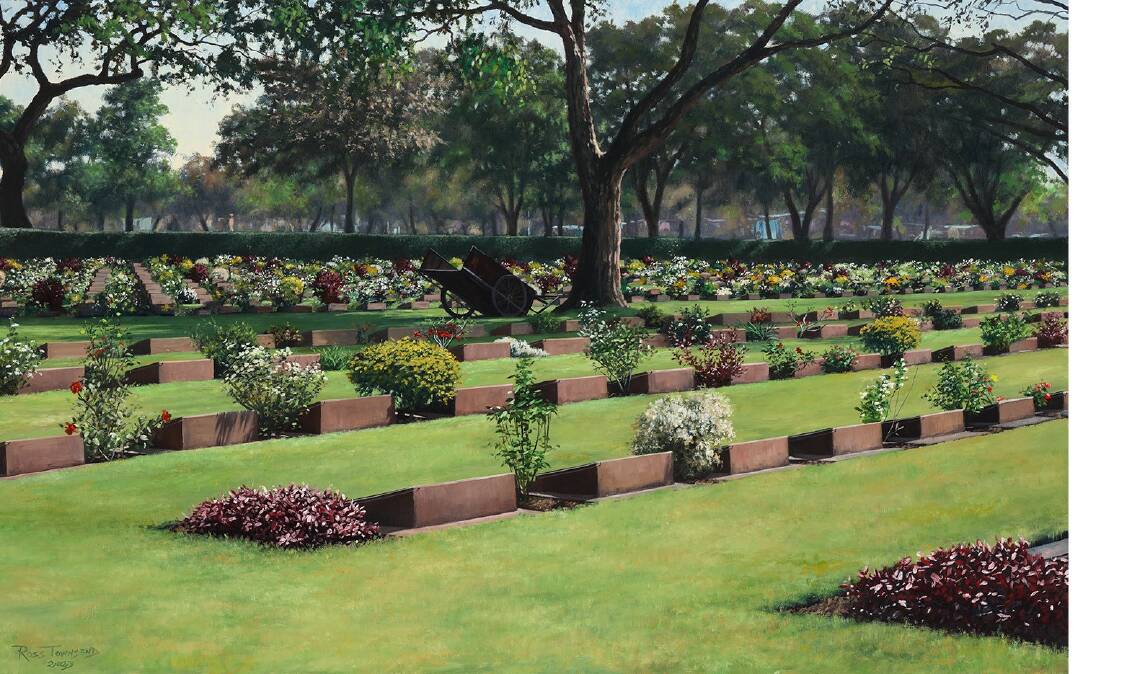
Gordon artist Ross Townsend is a finalist in the prize again this year, with his work Reflecting in Silence, showing a war cemetery in Thailand.
"While my wife and I were travelling in Thailand some years ago, we were extremely fortunate to have the opportunity to visit the Kanchanaburi War Cemetery," he said.
"Walking around this cemetery in silence, and reflecting on the presence of the souls laying to rest here, many of whom had suffered and died during the construction of the Thailand-Burma railway during World War II is a humbling experience. "
"The cemetery is immaculately presented and maintained - it's beautifully tragic - as seen by the vibrance in the colours of the plants, flowers and grass. it was a landscape scene I had to honour and preserve as a painting.
"I hope my painting gives those who may never venture to this war grave, or any other around the world, an opportunity to understand the emotion one experiences at this soulful and peaceful commemoration to the spirits of those who lost their lives through warfare; and remember the stories that should not be forgotten."
CHOWNE'S REST
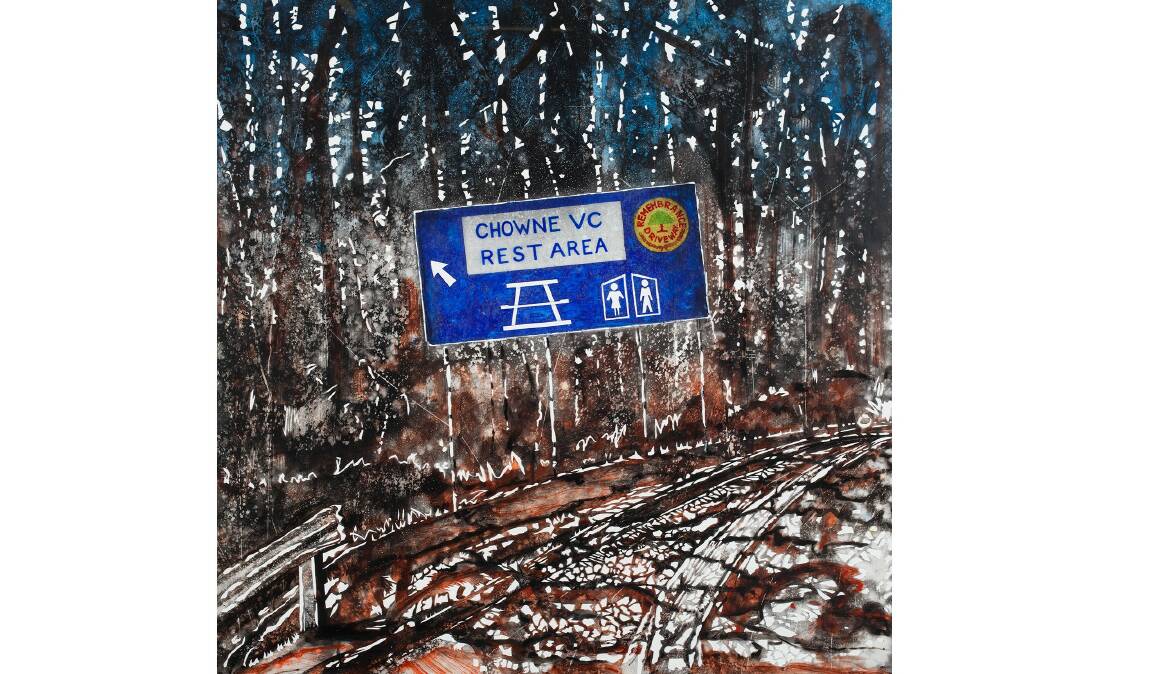
The winner of last year's Gallipoli Art Prize, Andrew Tomkins, has painted the Chowne VC rest stop at Marulan, part of the Remembrance Driveway, between Canberra and Sydney.
The rest stop is named after Lieutenant Albert Chowne who received the Victoria Cross posthumously. He was killed on March 25, 1945 when he charged the Japanese enemy, knocking out two machine guns before being killed.
He was buried in the Lae War Cemetery in New Guinea. A street in Campbell is named after him.
Tomkins said "some still react against memorials as a celebration of conflict, I argue the opposite".
"To shape a peaceful future, uniting all cultures all nations we must never forget, we must always remember the past."
The Sydney artist this year's work was a response to winning the prize last year.
"To being questioned a couple of times, 'Why? Why bother?'. Questions from people who have misunderstood the goals of the Gallipoli Art Prize, which is in itself a memorial ," he said.
"So I felt I needed to make a comment that memorials are not glorification of conflict , but a remembrance of individual sacrifice."
LAST MISSION
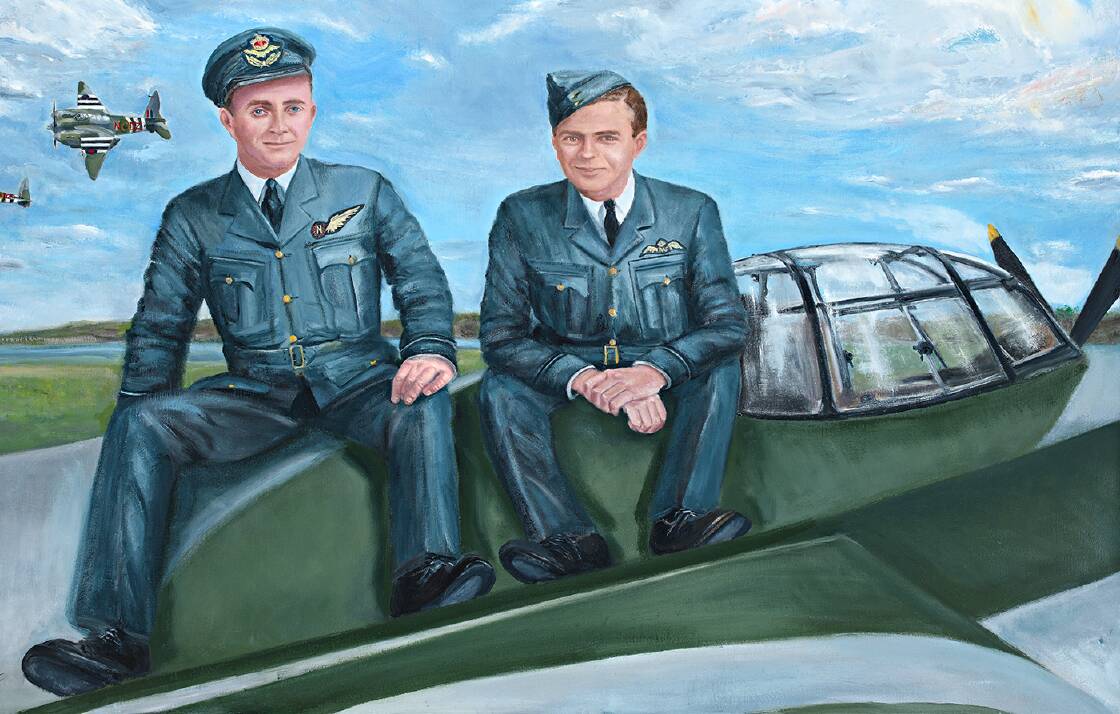
Canberra artist Sylvie Carter returns as a finalist in the prize with her work, Last Mission - Honouring F/O James Joseph Battle and F/O Alfred Campbell Briant.
"This portrait aims to capture and honour the spirit of F/O James Joseph Battle ('aka' Jimmy) (my father's cousin) and pilot F/O Alfred Campbell Briant ('aka' Bill) who served in 151 Squadron RAAF, ATT RAF UK," she said.
"They demonstrated enormous courage, loyalty, respect, and love of country flying many missions over occupied France during WWII.
"On the morning of 23 June 1944, they took off in their Mosquito De Havilland MM447 (NFK.XIII) (Codenamed 'Sweeney 39') from RAF Predannack, UK. Their mission was to strategically attack the railway stations of Ploermel, Redon, Chateaubriant, Saumur and La Fleche, in order to block the advance of the German troops in Normandy.
"Flying approximately 650 km per hour and very low, approximately 150 metres off the ground, they opened fire on their target at 1pm, shooting at the German locomotives and railway wagons. On the ground the German Anti-Aircraft machine gun fired. A few minutes later, 'Sweeney 39' crashed and immediately bursts into flames on the ground. Both pilots died. 'Jimmy' was only 29 years of age, and Bill 21."
THE WOUNDED SOLDIER
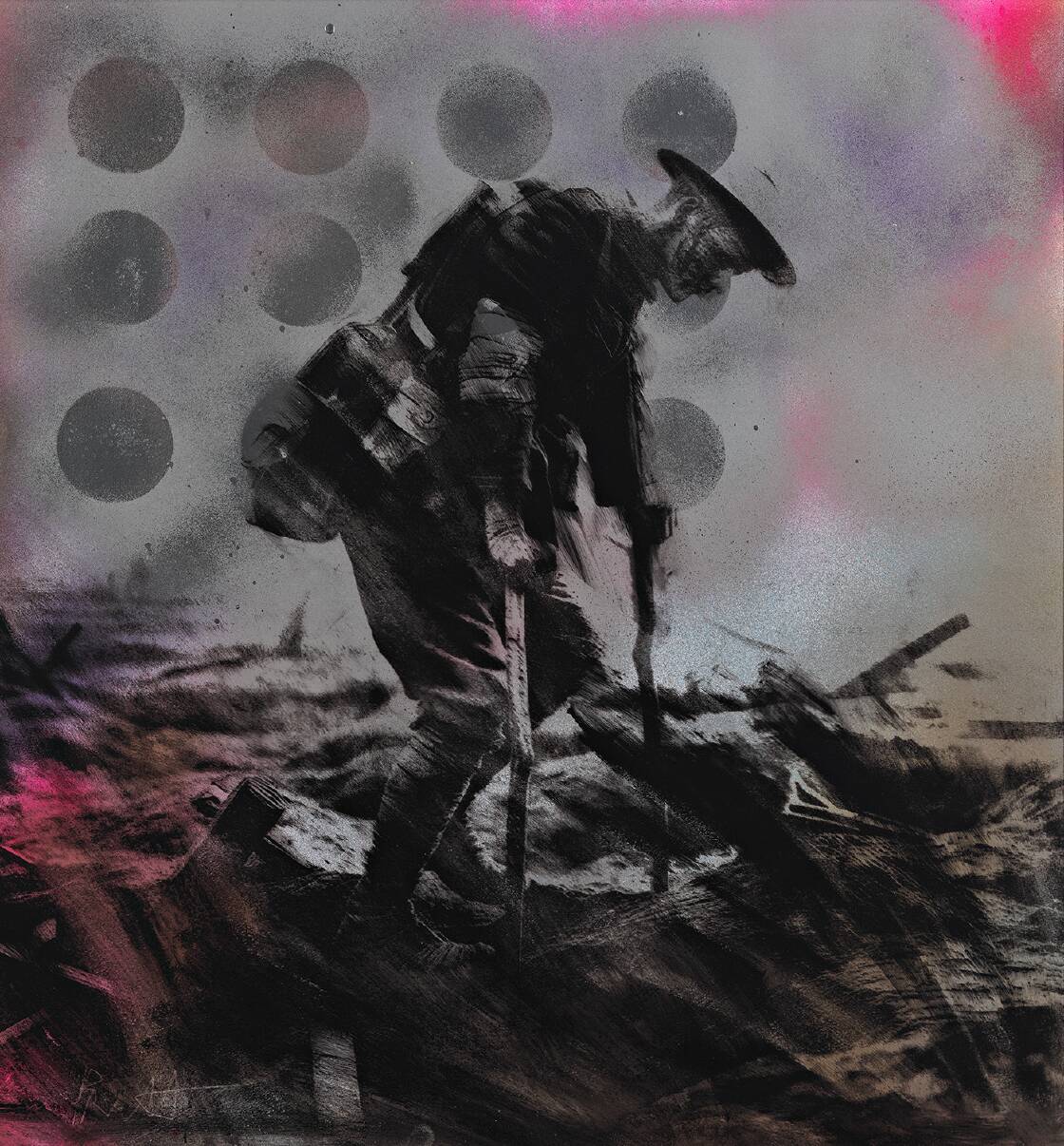
Former Canberran Louis Pratt is a finalist in the prize with his oil and acrylic work, The Wounded Soldier.
The son of Blanche d'Alpuget and Tony Pratt and step-son of former Labor prime minister Bob Hawke, Pratt grew up in Kambah and attended Telopea High and Narrabundah College. He has a sculpture on display at the National Arboretum.
"The Wounded Soldier is a reflection on the deep scars left by war, both visible and invisible." Pratt said. "This artwork delves into the personal aftermath of conflict, focusing on the internal and external wounds that soldiers carry. It seeks to present the reality of suffering endured by those who have fought, highlighting the enduring physical and psychological pain."
"In creating this piece, I aimed to strip away the glorification often associated with combat, instead presenting a raw, unembellished perspective on the soldier's experience. The figure in the artwork represents not just a single individual but all who have been marked by the brutality of war."
CAUGHT IN THE MIDST
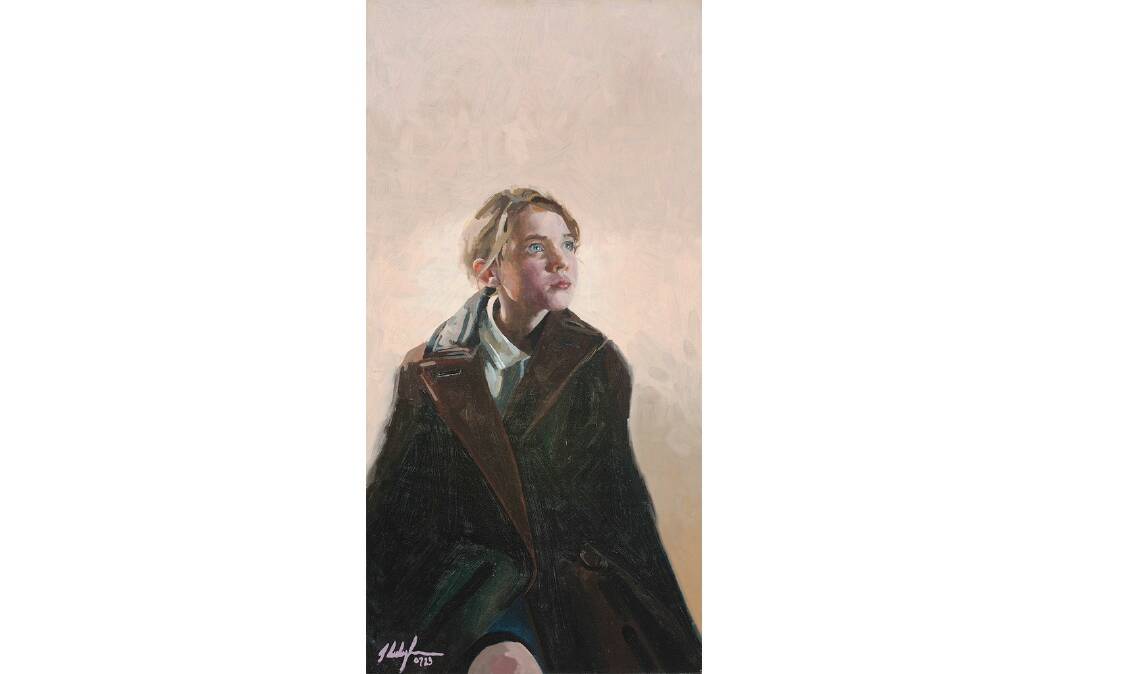
Caught in the Midst is another finalist work, by Jerrabomberra artist Andrew Littlejohn.
"While I wasn't drawn into a conflict the scale my grandfathers knew, it is looking as if our children may not be so fortunate," he said.
"She's strong, within her are the same values, ethos and sense of duty to serve of any before - but that doesn't make it any easier."
WHERE TO SEE THE WORKS
Gallipoli Memorial Club president and one of the art prize judges, John Robertson, said the works were all relevant to today.
"I am always impressed by the diversity of the works and how individual artists choose to respond to the special qualities within the Gallipoli Memorial Club's Creed," he said.
"These artworks inspire us to reflect deeply on perpetual peace and universal freedom, which is much needed in the world today. "
The works will be on exhibition at 6-8 Atherden Street, The Rocks, Sydney from April 18 to May 24.







